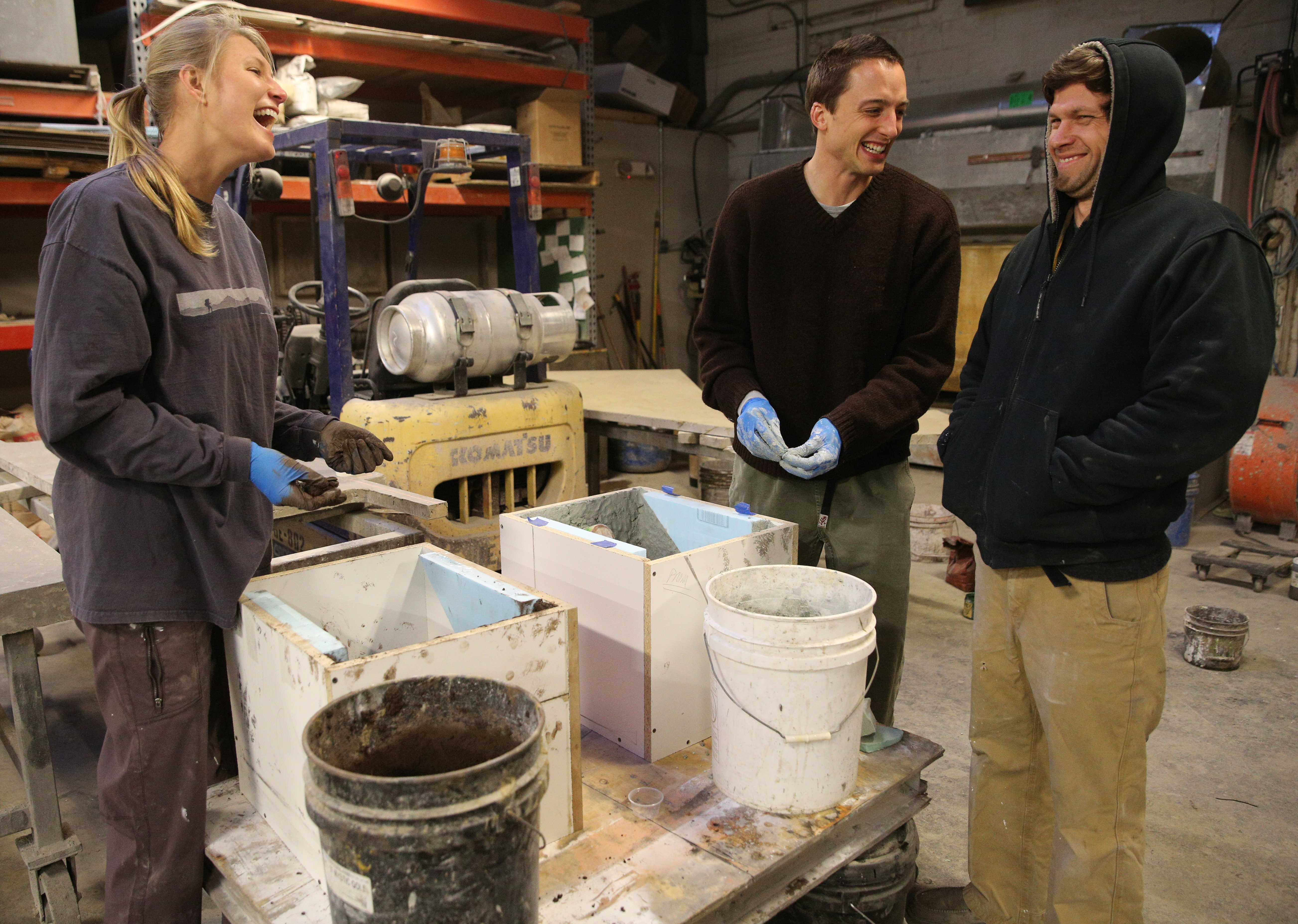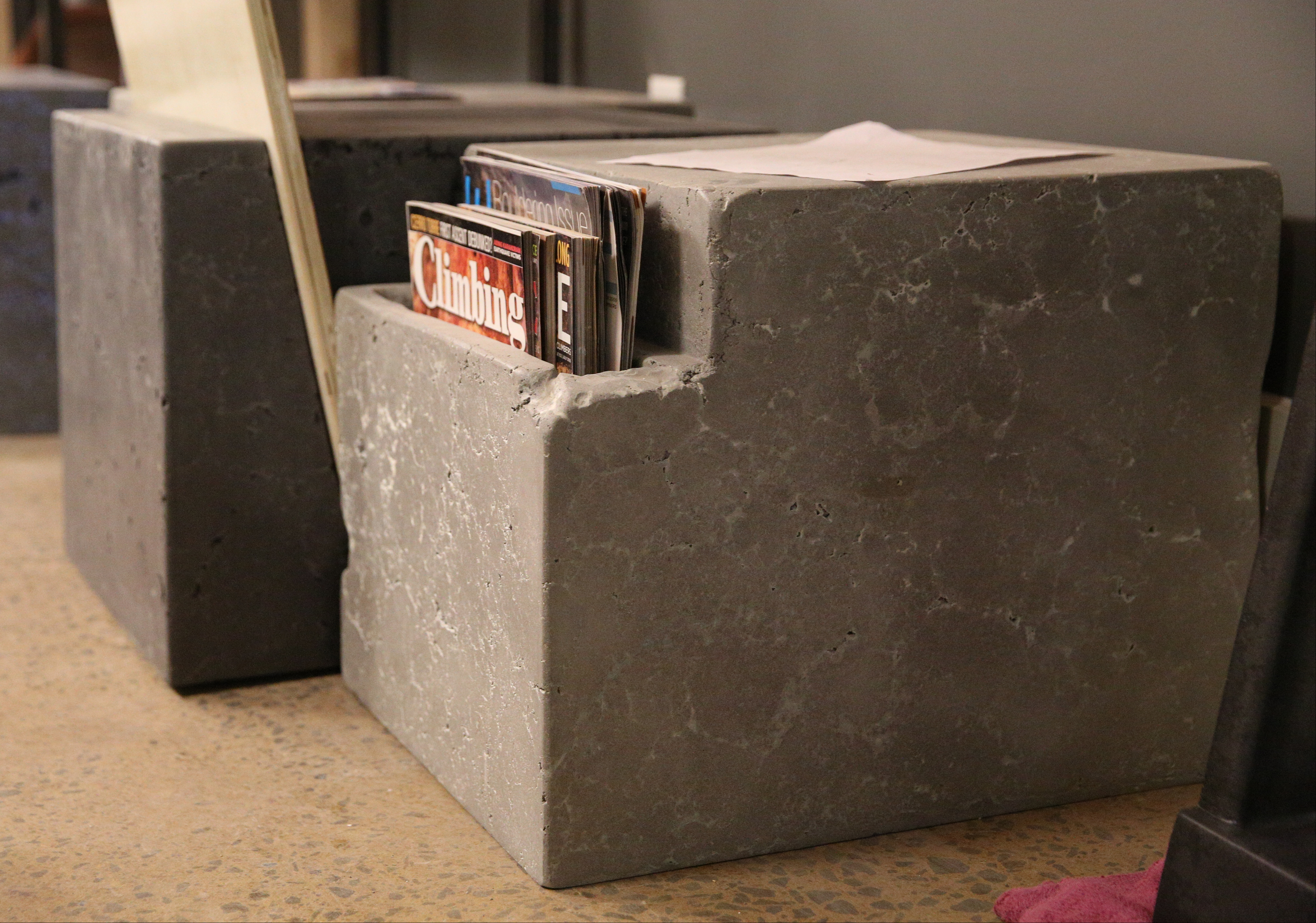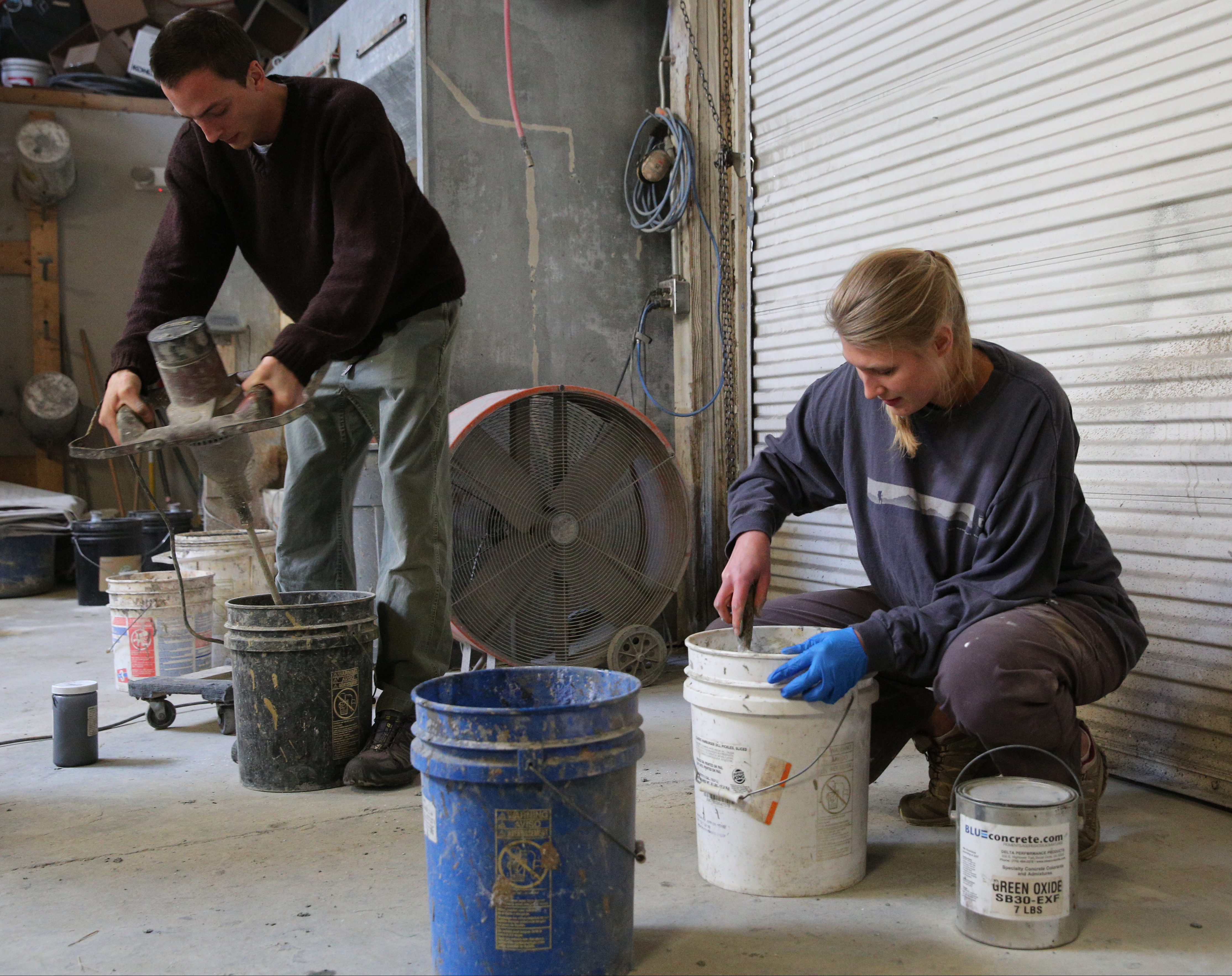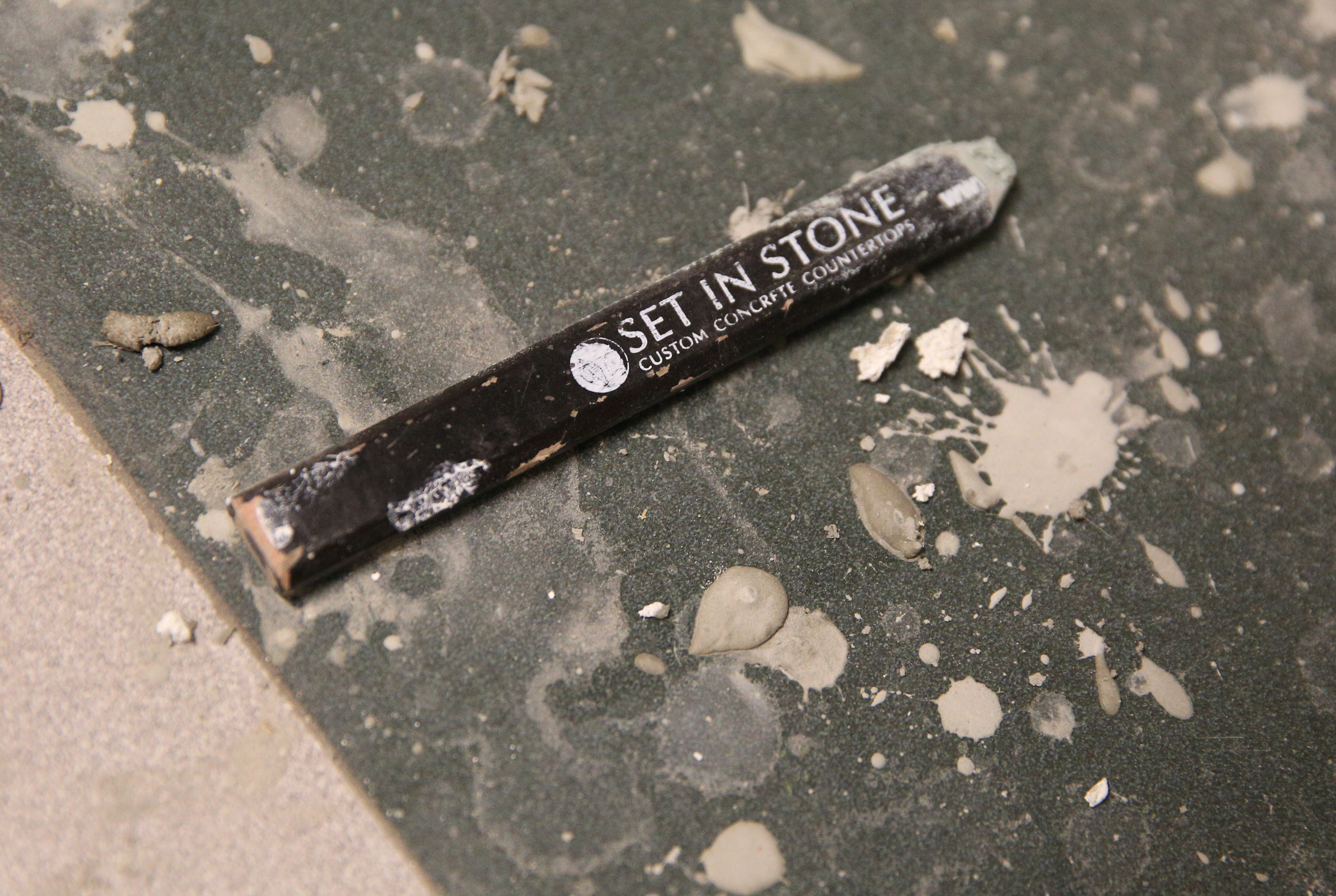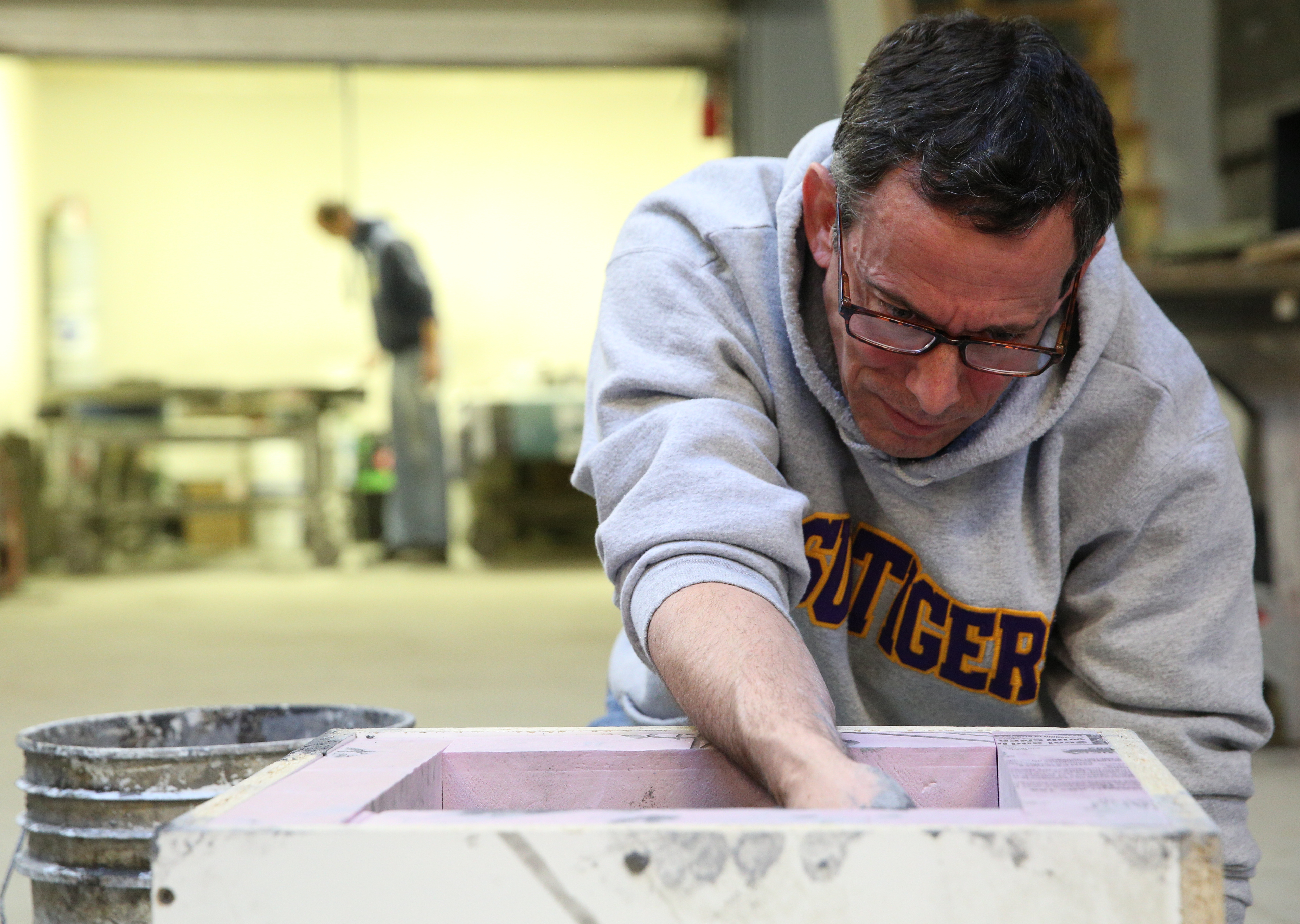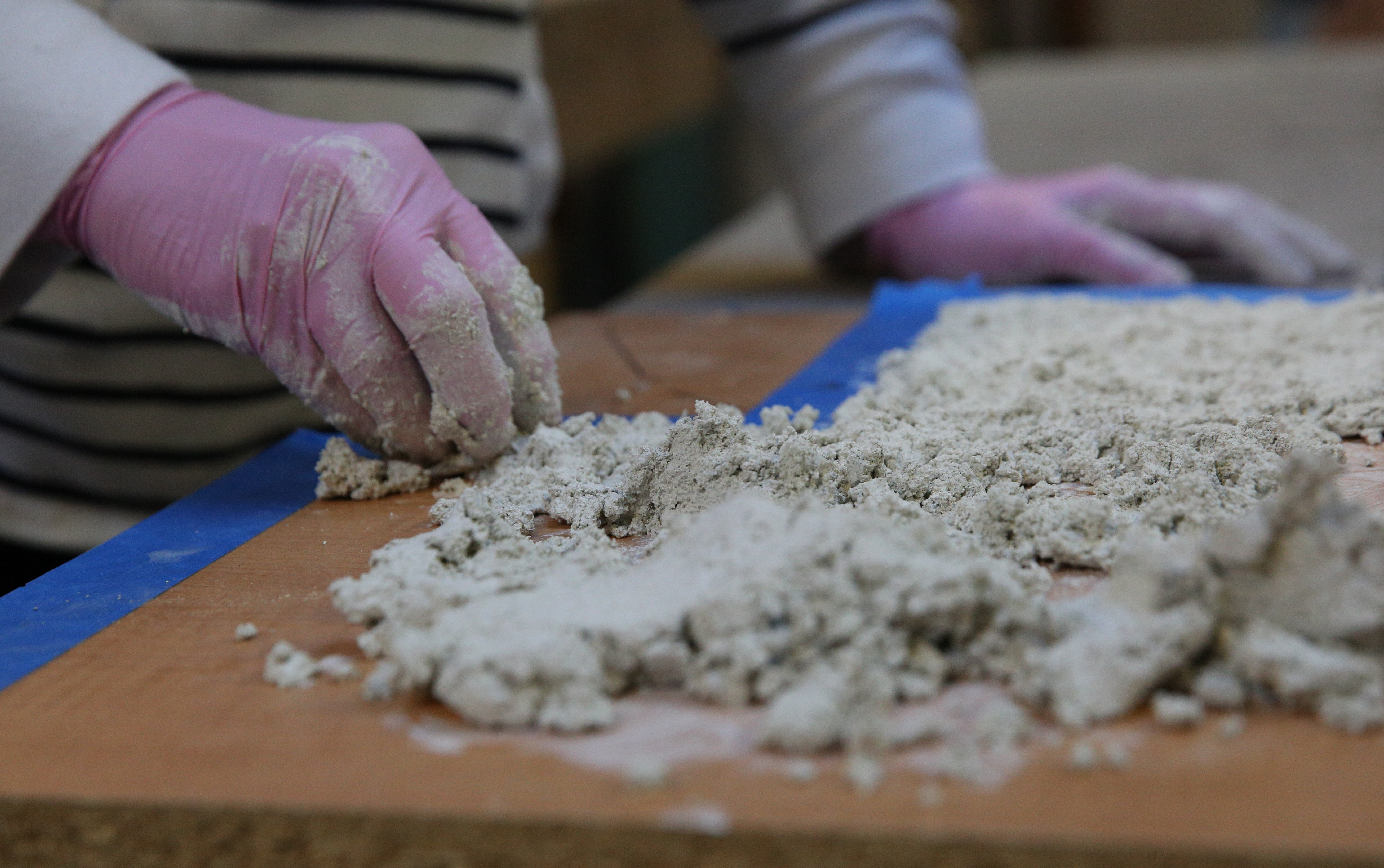CONCRETE WORKSHOPSAll workshops are at Set in Stone, 306 W. Main St., Suite 114. For more information, call 423-290-1180 or go to concretecaster.comNightly BuildsWhen: July 1, 8, 15, 22.Cost: $280 for all four classes, includes materials.1-Day DemoWhen: 9 a.m.-4 p.m. Sunday, May 18.Cost: $395.3-Day WorkshopWhen: 8 a.m.-5 p.m. Monday-Wednesday, May 19-21.Cost: $1,250.Source: Set in Stone
When Diane Human heard the word "concrete," she associated it with roads and retaining walls.
That changed four years ago when someone told her she should consider putting a concrete sink in a bathroom she was remodeling.
"Concrete sink? Give me a break," she recalls saying.
"But I looked it up on the Internet anyway and was shocked at how beautiful concrete can be. I designed my sink on the spot, and the boys at Set in Stone created it for me," she says. "And it's beautiful. It's kidney-shaped with a mother of pearl inlay."
Human, 57, a health insurance broker, is now a fan of concrete products and is taking a four-class workshop, "Nightly Build," at Set in Stone on Main Street. Store owners Justin Burd and Nathan Smith teach students how to create concrete pieces ranging from functional items to art pieces. Human is making an octagonal bench for her outdoor garden.
"It's something different," she says. "I'd like to build more. I love the look of concrete. It's not flashy, and I love its permanence."
Smith says interest in working with concrete has skyrocketed in recent years.
"Concrete has been around since Roman times, but it has recently seen a surge of interest," he says. "It's an amazing material, and we're trying to help take it to the next level."
Its popularity has a lot to do with its simplicity, Smith adds.
"It can be formed and molded into any conceivable shape. It is self-hardening and has a decent working life before it sets. It can be colored to match any shade out there, and it takes on a patina and life of its own that we sometimes have little control over. It is unpredictable in the sense that every piece we cast is different and one-of-a-kind," he says.
Local concrete artist Kem Alexander says another benefit of working with concrete is that it doesn't require "any special place or process to have a great outcome."
"Mixing concrete is like baking ... (and) requires the specific ingredients of sand, Portland cement and water being measured. The only other ingredients are patience and imagination," Alexander says.
Set in Stone's "Nightly Build" class was designed one year ago for the Chattanooga market, Smith says. Its runtime from 6 to 8 p.m. one night a week for a month was chosen specifically for people with fulltime jobs.
"Our hope was that one would be able to clock out of their day job and be able to do something a little different and possibly use a different skill that doesn't get exercised much," Smith says. "This isn't a hard process, and it's fun. Anyone can do it. And you get to make something useful that you can take home with you at the end of the classes."
Smith says his home is loaded with concrete items ranging from countertops and sinks to a shower stall, coffee and end tables, stools, planters, even an iPad stand. Burd is making a concrete treehouse for his 6-year-old daughter, Bella.
Set in Stone has offered concrete-making activities during the MainX24 art event for a couple of years, but those were aimed more at kids, Smith says. Strange thing at those events, though, adults jumped in with enthusiasm.
"It's like playing in the mud," Human says. "I don't even wear gloves. It's messy and dirty, but I don't care. I just make sure to wear dirty duds."
In the class, students start with square wooden boxes already on hand in the studio. Carved pieces of foam are then inserted into the box to create the outline of the final piece.
"Students will have design control within that shape," Burd says. "They can add detail to the shape or take away from the shape. This is where the student gets to be creative in the design."
A second guideline is that the object can only weigh 50 pounds, which is light enough to move around without a lot of grunting and sweating.
As her project, Human made an octagon garden bench.
"It was tricky to know where to put the Styrofoam and where to leave the 'negative' space that would end up being my table," she says.
The classes cost $280 per person, but Human says students get their money's worth.
"They encourage people to learn to work with concrete then make their own products," she says. "And it's something I think I will do. If my bench turns out OK, I already want to make three more to sit around my outdoor fire pit."
Contact Karen Nazor Hill at khill@timesfreepress.com or 423-757-6396.

